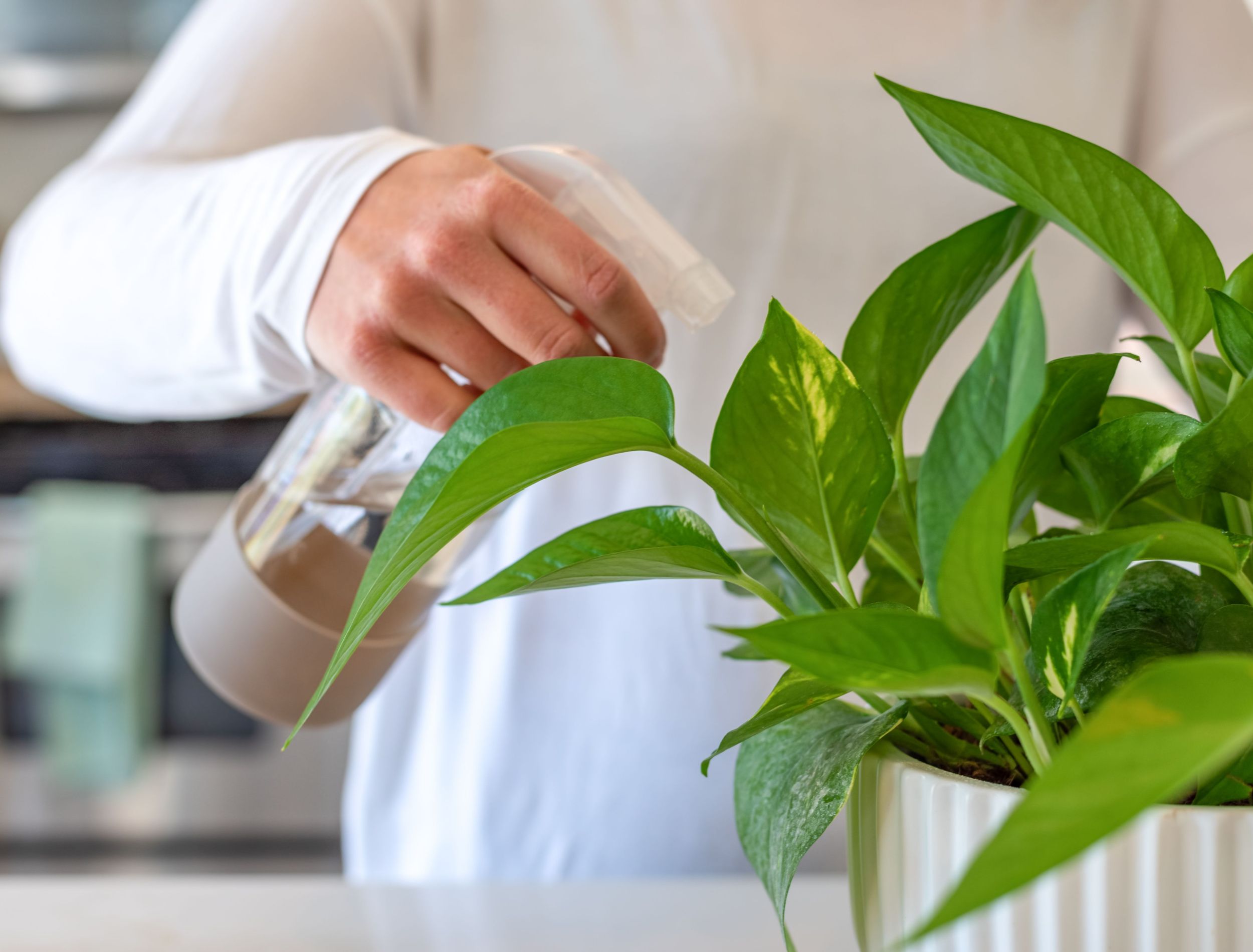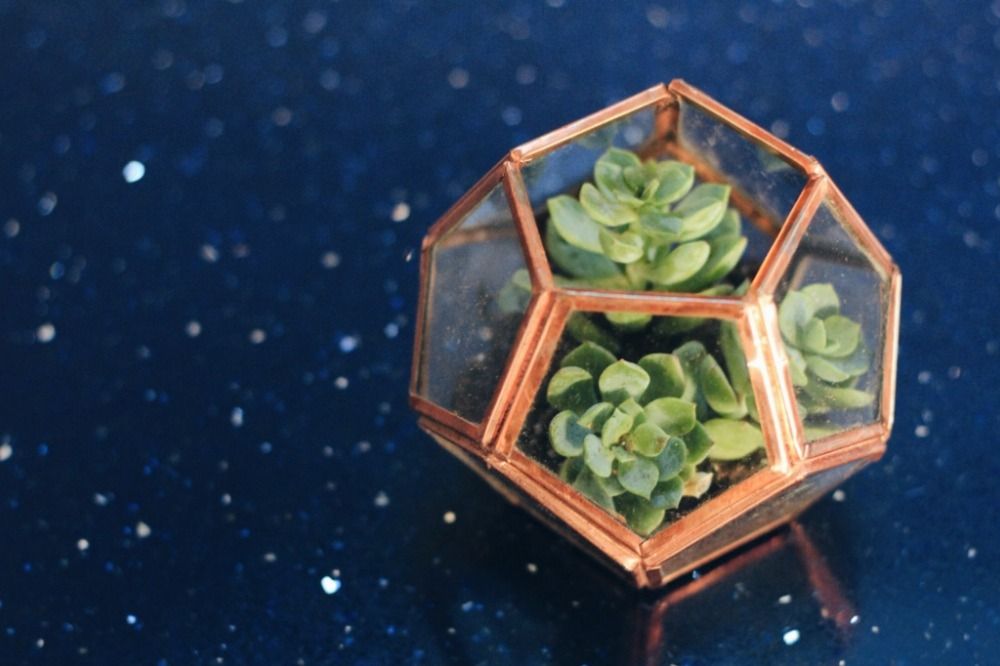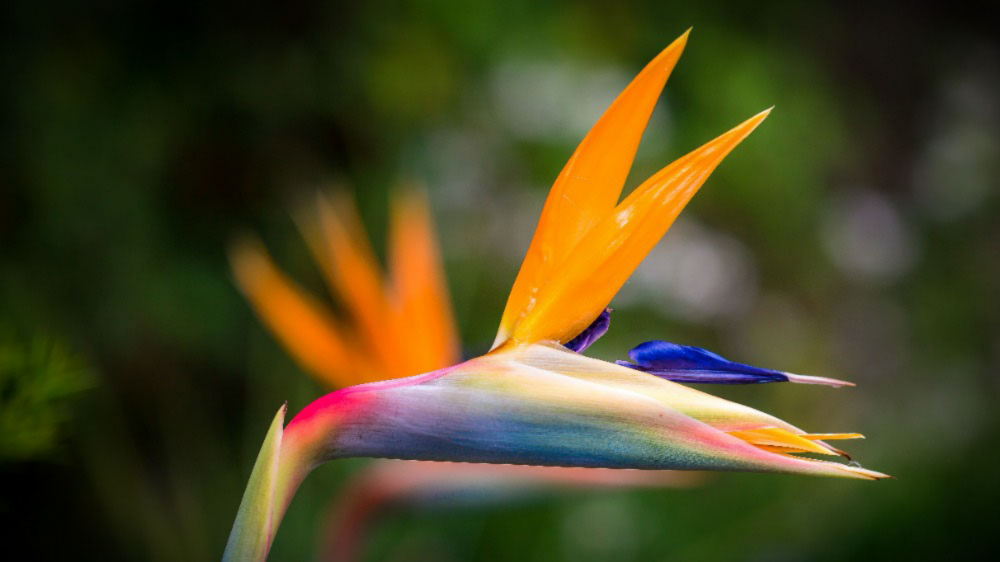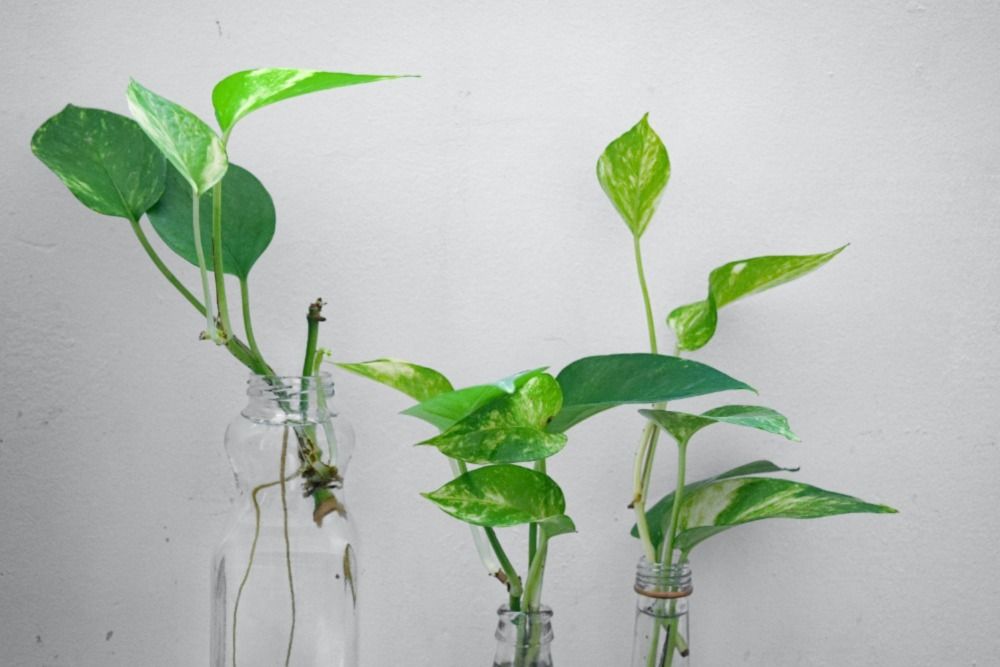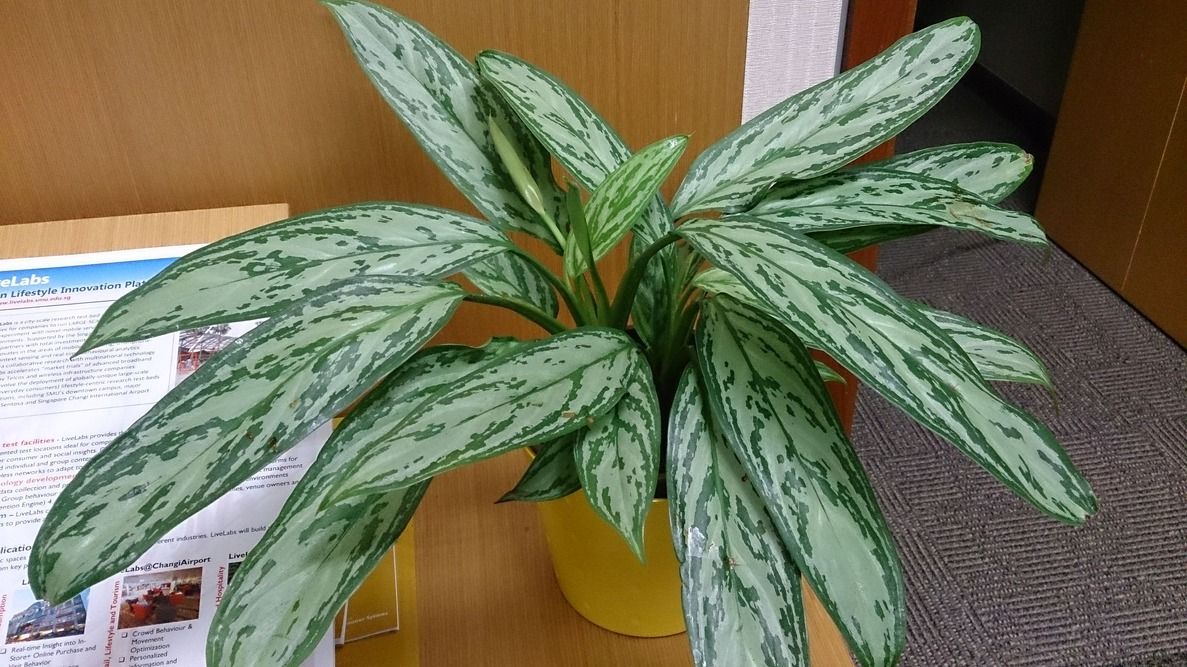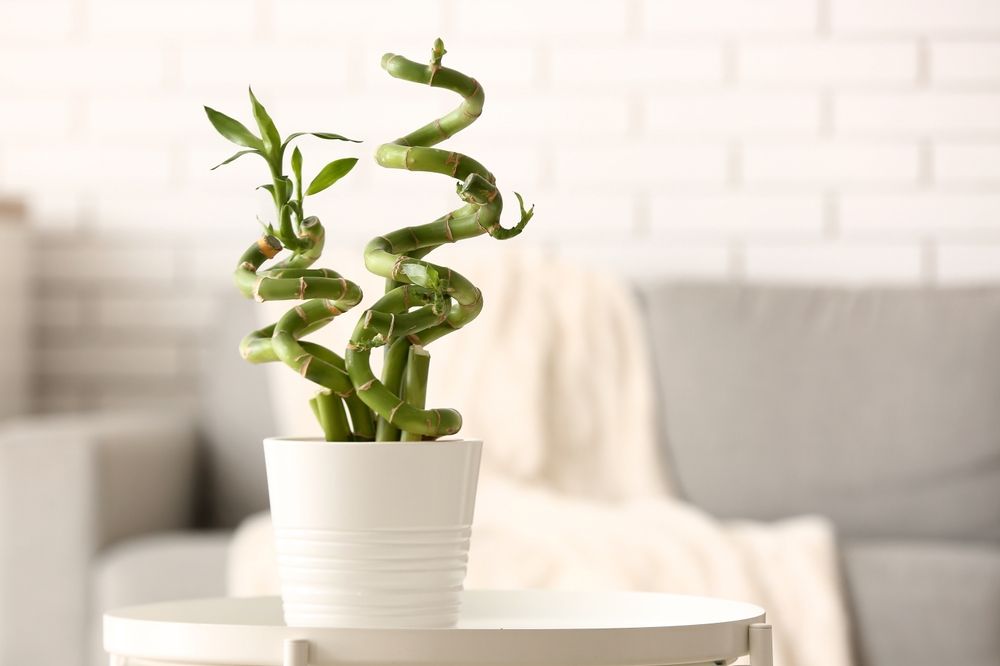Key Takeaways
- Succulents are ideal for terrariums because they store water in their leaves and don't require much watering.
- Bird of Paradise plants thrive in wet surroundings and don't need drainage holes, making them perfect for indoor environments.
- Golden Pothos can be grown in water, eliminating the need for drainage, and can be displayed in unique ways to showcase their beauty as they grow.
Most plants need drainage to thrive. Pots with drainage holes are sieves for excess water and help prevent root rot, fungus, and bacterial growth. Even though it seems plants can't live without proper drainage, there are unique houseplants that don't need drainage holes.
These varieties either come from very wet or very dry environments. Learn about these fantastic indoor plants that don't need drainage holes.
1 Succulents in Terrariums
Create miniature self-contained gardens
Succulents are great for terrariums for many reasons, including:
- They store water in their leaves and stems, so they don't need much watering.
- They're slow-growing plants.
- They're small, which makes them excellent for enclosed glass containers.
Terrariums are pots without drainage holes, but you can easily add drainage layers to the terrarium to act as a water filter. A terrarium can be any glass container you want, such as a goldfish bowl, a mason jar, a geometric glass holder, or even a small aquarium.
|
Growing Conditions for Succulents in Terrariums |
|
|---|---|
|
Fertilizer |
Balanced, water-soluble fertilizer you dilute to half strength (10-10-10). |
|
Once a month during spring and summer and cease during fall and winter. |
|
|
Humidity |
Open Terrariums: 40 to 60 percent. |
|
Closed Terrariums: Below 60 percent. |
|
|
Soil |
Base Layer: 2-inch platform of pebbles, small stones, or coarse gravel.* |
|
Middle Layer: Large spoonful of activated charcoal to prevent bacteria growth.* |
|
|
Top Layer: Moss.* |
|
|
Sunlight |
Bright, indirect lighting. |
|
Six to eight hours daily for natural light or 12 to 14 hours daily for artificial light. |
|
|
Temperature |
Open Terrariums: 60 degrees Fahrenheit to 70 degrees Fahrenheit. |
|
Closed Terrariums: 65 degrees Fahrenheit to 75 degrees Fahrenheit. |
|
|
Water |
Open Terrariums: A tablespoon of water weekly or weekly misting. |
|
Closed Terrariums: 2 to 3 tablespoons every four to six months. |
|
|
*All layers should measure ¼ to ⅓ inch of the whole terrarium, as you want enough space for the succulents to grow. |
|
Succulents are tropical plants and like dry but humid conditions for growth. An open terrarium offers the best option for moist growing conditions.
2 Bird of Paradise
Exotic plants with bold colors
The bird of paradise is a striking plant with dramatic orange and deep blue flowers that resemble a bird's head. This plant is native to the Eastern Cape of Southern Africa and grows in coastal bushes and along riverbanks in a rainy climate.
For these reasons, the plant can thrive in wet surroundings, and no drainage holes are needed. Additionally, birds of paradise do well in greenhouses or conservatories, but you can create a similar atmosphere in your home.
|
Growing Conditions for Bird of Paradise Plants |
|
|---|---|
|
Fertilizer |
Bi-weekly in the spring and summer; once a month during fall and winter when the plant is dormant. |
|
A liquid feed gives it a burst of nutrients to support healthy blooms. |
|
|
Humidity |
60 percent. |
|
When humidity is low in winter, place the plant on a pebble tray to increase the relative humidity.* |
|
|
Soil |
⅓ part peat, ⅓ part coarse sand or perlite, and ⅓ part pine bark to encourage drainage. |
|
The pH should be between 6.0 and 7.5. |
|
|
Five hours of direct morning sunlight daily at a minimum. |
|
|
Sunlight |
|
|
A south-facing window is an excellent option during spring and summer. Aim for 12 to 14 hours of artificial light during fall and winter. |
|
|
Temperature |
Daytime: 65 degrees Fahrenheit and higher. |
|
Nighttime: 50 to 54 degrees Fahrenheit. |
|
|
Water |
Spring and Summer: Water once or twice a week, as this is the active growing season. |
|
Fall and Winter: Water once every two weeks during the dormancy period. |
|
|
*Increasing the humidity levels during winter encourages the plants to produce flowers. |
|
Before watering, check the top 1 to 2 inches of soil by sticking your finger this deep into the soil. If it feels dry, water. If the soil feels moist or soggy, wait.
3 Golden Pothos
Vibrant, hardy houseplants
Golden pothos, also known as devil's ivy, is a fast-growing vining plant with variegated leaves in green and yellow. You can place the stems in a tall vase with water, a mounted container on the wall, an indoor trellis, or a moss pole in a pot. These unique ways of displaying your pothos help capture the vines' beauty as they grow.
|
Growing Conditions for Golden Pothos |
|
|---|---|
|
Fertilizer |
Fertilize once every two to three months during spring and summer and stop fertilizing in fall and winter as the plant goes dormant. |
|
Use a balanced, water-soluble houseplant fertilizer (10-10-10) that you dilute to half-strength. |
|
|
Humidity |
40 to 80 percent. |
|
Mist around the plant to increase the humidity levels. |
|
|
Soil |
Well draining and airy with a pH range of 6.1 to 6.5. |
|
Pick a potting mix with perlite, pumice, and bark chips to encourage drainage. |
|
|
Sunlight |
Filtered, indirect lighting. |
|
Six to eight hours daily. |
|
|
Temperature |
65 degrees Fahrenheit to 85 degrees Fahrenheit.* |
|
Keep the temperature steady and avoid areas with drafts to keep your plants healthy. |
|
|
Water |
Once every one to two weeks. |
|
Water when the top inch of soil feels dry. |
|
|
*Golden pothos can tolerate a temperature range from 50 degrees Fahrenheit to 90 degrees Fahrenheit without damage. |
|
Eliminate the need for drainage by growing your pothos in water! Simply cut a stem after the node and remove the leaves from the bottom. Then, put your cutting in a glass bottle with water and watch them grow!
4 Chinese Evergreen
Elegant, low-light plants
These are hardy plants that don't need drainage holes in their containers. Originating in Asia, this tropical perennial produces floppy foliage in various green hues. It thrives in moist or wet soil and water and bounces back if you don't water it consistently.
The leaves will wilt if you expose them to bright, direct light, which can eventually lead to leaf scorch, so you want to be careful about their environment to keep them healthy.
|
Growing Conditions for Chinese Evergreen |
|
|---|---|
|
Fertilizer |
Once a month during spring and summer and once every two months during fall and winter. |
|
Use a slow-release fertilizer for steady nutrients with a 20-20-20 NPK ratio. |
|
|
Humidity |
50 to 60 percent. |
|
Low or high humidity can lead to fungal disease or foliage curling and drying out. |
|
|
Soil |
30 percent potting soil, 20 percent pumice or perlite, and 50 percent coconut coir. |
|
pH of 5.5 to 6.5. |
|
|
Sunlight |
Indirect but bright light.* |
|
Six to eight hours daily, but can survive low lighting conditions.* |
|
|
Temperature |
65 degrees Fahrenheit to 80 degrees Fahrenheit. |
|
It can survive short periods down to 60 degrees Fahrenheit or over 90 degrees Fahrenheit. |
|
|
Water |
Roughly once a week. |
|
Water when the top inch of soil is dry to the touch. |
|
|
*West or north-facing windows work well because they give the plant indirect but bright light for most of the day. |
|
Chinese evergreen is toxic to pets and humans if ingested, so keep it somewhere safe and out of reach.
5 Lucky Bamboo
Charming mini bamboo-esque plants
This popular houseplant can thrive in a pot with drainage holes or without them, and many people grow lucky bamboo for its sleek appearance and feng shui benefits. It may look like a mini bamboo plant, but it features a fleshier, softer stem than you'll find on woody bamboo.
Buying this plant in a small water vase or vessel is common, and you can put it in a vase with pebbles to keep the stalks upright.
|
Growing Conditions for Lucky Bamboo |
|
|---|---|
|
Fertilizer |
A balanced, water-soluble 10-10-10 or 20-20-20 formula. |
|
Fertilize once every two months during spring and summer and stop during fall and winter. |
|
|
Humidity |
40 to 60 percent. |
|
Misting the leaves is an easy way to raise the relative humidity levels. |
|
|
Soil |
2 parts potting soil to 1 part sand or pumice to ensure good drainage. |
|
pH range of 6.0 and 7.0. |
|
|
Sunlight |
Indirect, bright light for six hours daily. |
|
East or west-facing windows are ideal to get the correct light. |
|
|
Temperature |
65 degrees Fahrenheit to 90 degrees Fahrenheit |
|
Keep the plant away from drafts as it grows best with consistent temperatures. |
|
|
Water |
Water roughly once a week.* |
|
The top inch of soil should dry between waterings. |
|
|
*If growing in water, submerge the roots and change the water weekly to prevent bacteria growth. |
|
Lucky bamboo plants contain saponins, which are mildly toxic to cats and dogs if ingested.
No Drainage Needed!
Overall, it's well worth looking at plants that don't need pots with drainage holes. You can create unique terrariums, pretty vase arrangements, ornamental poles, and trellises to house some of your favorite plants.
Do you want to grow indoor plants that don't need drainage holes in the container? Share this article with your family and friends to give them ideas on the next plants they can add to their collections!

